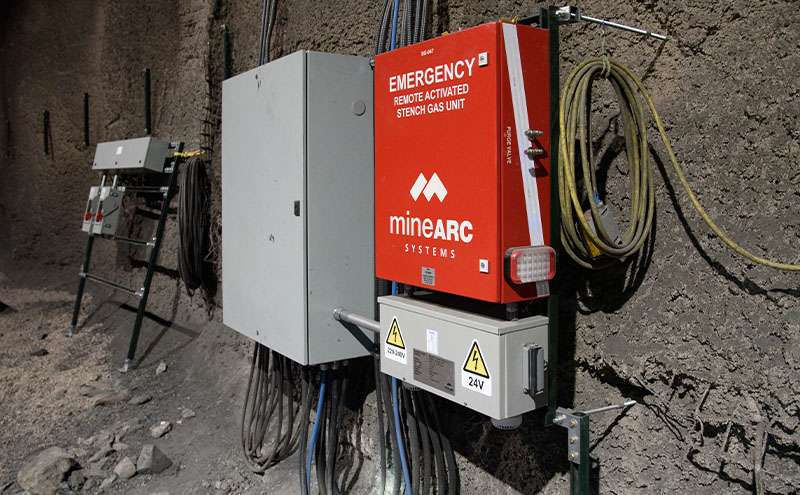The influence of the olfactory system to warn us of possible danger is more powerful than we think. This trigger is why stench gas and wintergreen are commonly deployed in high-risk areas where multiple alerts are necessary.
Our sense of smell is one of the most prominent warning systems for our body. In noisy underground and industrial workplaces, it can be an essential alert system.
Although underrated, smell is a fundamental sense; it enables you to taste, can provoke memories, and, more importantly, help you survive.
How does your body smell danger?
Sensing Danger – Olfactory Alert Systems
How you process the information received by the nose determines your subsequent actions. Yet, external factors are influencing how you react. Cultural, professional and personal influences transform your behaviour. What you believe, or are trained to think, about an odour and exposure to its source impacts your reaction.
Smell is like an early-warning system for the body, eliciting adverse reactions to particular perceptions of harm. Consider how your body reacts when you smell a foul odour, such as off milk in the fridge, that guy at the gym, or bleach in your laundry – each distinct scent warns you of a proposed danger. The same applies to those working in resource or heavy industry sectors; perceived toxicity from odorous chemical or threat from smoke all initiate your body’s survival mechanisms.
For example, in mining and underground environment, stench gas is used to alert personnel in areas when sirens may not be heard. Its adoption is due to the distinct foul-smelling odour, similar to rotten eggs. Stench gas is remotely or manually released into the ventilation system during an emergency. As personnel detect the stench gas, a high perception of risk is signalled by the odour, warning of danger and instigating a trained response.

That being said, not every noxious gas or danger has an odour, and you must be equipped with adequate personal protective equipment to remain safe and vigilant.
The Mechanics of Smell
How the olfactory system works is quite complicated. Your sensory system gathers data from a range of distances and sources while rapidly transmitting impulses to your brain.
Simply put, we breathe in odorous molecules from everything in our environment. As they move through the nasal cavity, these molecules come in contact with olfactory receptors. Receptors only occupy a small, stamp-sized area on the nasal roof, located towards the back of the cavity. As air passes, nerve fibres on the ends of the receptors activate, sending signals to the brain.
Information collected by the nerve fibres is sent to the limbic system in the brain and relayed to the cortex. As olfactory receptors connect to the limbic system, smells create emotional and physical responses.
How we detect different smells is through pattern recognition; types of odour molecules have familiar patterns which are pieced together in the brain. Just a few molecules are all it takes.
Detecting Wintergreen Stench Gas in Strong Smelling Environments
Not every workplace, however, can use the rotten smell of stench gas to trigger emergency response actions. Some mining and industrial environments are located in areas where foul odours are normality. Yet, these worksites still contest with similar environmental conditions that can cause a visual or audible alert to be missed. An alternate wintergreen gas can counteract the natural smell of the environment and support an in-depth emergency response plan.
A zinc-copper mine in Australia, for example, deployed wintergreen as their emergency alert system. The mine is located under a disused landfill with high sulphide deposits, and odours from the volcanic-hosted ground and old facility are potent.
Wintergreen has a pleasant aroma and is typically used to provide an all-clear signal. In this environment, the distinct pine-like scent was dominant in the general atmosphere, providing a fresh alternate emergency alert. Personnel were trained to recognise the odour as a warning system.
In addition, wintergreen has been used as a stench gas alternative in underground mines where methane is prevalent.

Hazards are common in high-risk environments, including underground mines and tunnel construction. Distinct, recognisable alert systems are integral to the safety of personnel on-site. Your sense of smell provides an in-built early warning system for possible dangers. Utilising the human capacity to link risk to smell, the implementation of stench gas or wintergreen into hazardous environments will improve safety.







